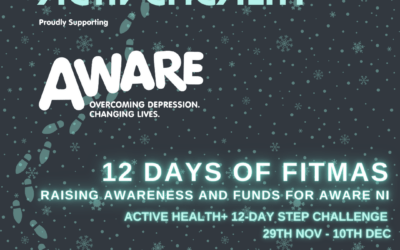Understanding Chronic Pain: Causes and Common Conditions
Chronic pain is a complex and challenging condition that affects millions of individuals worldwide. Unlike acute pain, which is often temporary and serves as a warning sign of injury or illness, chronic pain persists over an extended period, typically lasting for three months or more. This enduring discomfort can significantly impact a person’s quality of life, making it crucial to understand its causes and common conditions.
What Causes Chronic Pain?
Chronic pain can arise from a variety of factors, and it’s not always easy to pinpoint a single cause. Here are some key contributors:
-
Injury or Trauma: One of the most common causes of chronic pain is a previous injury or trauma. Conditions like post-surgical pain, scar tissue formation, and nerve damage can lead to persistent discomfort.
-
Medical Conditions: Chronic pain is often associated with underlying medical conditions such as arthritis, fibromyalgia, diabetes, and autoimmune diseases. These conditions can lead to ongoing pain as a result of inflammation or nerve dysfunction.
-
Neuropathic Pain: Nerve damage or dysfunction can result in neuropathic pain, characterized by shooting or burning sensations. Conditions like diabetic neuropathy and post-herpetic neuralgia fall into this category.
-
Psychological Factors: Emotional and psychological factors can exacerbate chronic pain. Conditions like depression, anxiety, and chronic stress can intensify the perception of pain.
-
Lifestyle Factors: Poor posture, sedentary lifestyles, and obesity can contribute to chronic pain, particularly in the back, neck, and joints.
Common Conditions Associated with Chronic Pain
While chronic pain can manifest in various ways, some conditions are frequently linked to this persistent discomfort. Understanding these conditions is essential for effective management:
-
Arthritis: Osteoarthritis and rheumatoid arthritis are leading causes of chronic joint pain. These conditions involve the degeneration of joint cartilage and inflammation.
-
Fibromyalgia: Fibromyalgia is characterized by widespread musculoskeletal pain, often accompanied by fatigue, sleep disturbances, and tender points on the body.
-
Chronic Back Pain: Conditions like herniated discs, spinal stenosis, and degenerative disc disease can lead to chronic back pain, affecting mobility and daily activities.
-
Migraines and Headaches: Chronic migraines and tension-type headaches can result in frequent, severe head pain, often accompanied by other symptoms such as nausea and light sensitivity.
-
Neuropathic Pain: Conditions like diabetic neuropathy, sciatica, and trigeminal neuralgia are associated with chronic neuropathic pain.
Seeking Help for Chronic Pain
Living with chronic pain can be physically and emotionally draining. Fortunately, various treatments and therapies are available to help manage and alleviate chronic pain. These may include:
-
Physiotherapy: Targeted exercises and manual therapies can improve mobility and reduce pain for conditions like arthritis and back pain.
-
Medications: Pain relievers, anti-inflammatories, and medications specifically designed for neuropathic pain can be prescribed.
-
Psychological Support: Therapy and counseling can help individuals cope with the emotional toll of chronic pain.
-
Lifestyle Changes: Adopting a healthy lifestyle, including regular exercise, maintaining a healthy weight, and practicing stress management techniques, can play a significant role in pain management.
If you or someone you know is living with chronic pain, it’s essential to consult with healthcare professionals who can provide a tailored treatment plan. At Active Health+, we specialise in chronic pain management and offer a holistic, multidisciplinary approach to help you live life to the fullest, free from the constraints of pain.
Understanding the causes and common conditions associated with chronic pain is the first step toward effective management and improved quality of life.
Watch this short video from David Saligari’s home country of Australia which does a great job of explaining chronic pain.
Related Articles
How do I track my steps each day?
Are you taking part in our 12 Days of Fitmas Steps Challenge this year? Not sure how to keep a track of how many steps you've done each day? Don't worry - we're here to help!Read on for three options to help you keep track! Use your...
Active Health’s 12 Days of Fitmas
What?: 12 Days of Fitmas Step Challenge Info: Active Health is fundraising for Aware NI and we'd love you to join us in an independent step challenge with a group walk to finish! When?: 29th Nov – 10th Dec This year we are hosting a 12-Day Step Count Challenge....
Fibromyalgia
Fibromyalgia is a chronic condition characterised by widespread pain throughout the body along with fatigue, memory problems, sleep and mood disorders.



